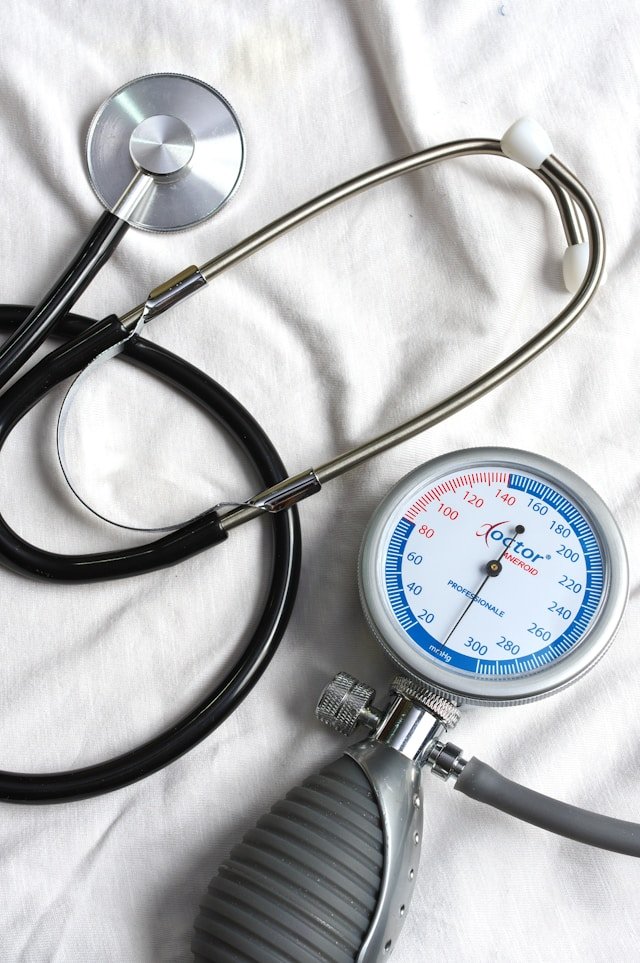
what’s high blood pressure?
Many people don’t know what’s high blood pressure? Blood pressure is the force exerted by circulating blood against the walls of the arteries as the heart pumps it throughout the body. Blood pressure rate is typically measured in millimeters of mercury (mmHg) and expressed as two values: systolic pressure over diastolic pressure. The systolic pressure is the higher of the two numbers and represents the pressure in the arteries when the heart contracts and pumps blood. The diastolic pressure is the lower number, representing the pressure in the arteries when the heart is at rest between beats.
Good bp reading for blood pressure is generally considered to be around 120/80 mmHg. However, blood pressure can vary among individuals, and what is considered normal may differ based on factors such as age, sex, and overall health.
Maintaining a healthy blood pressure is crucial for cardiovascular health. Higher blood pressure (hypertension) can strain the heart and blood vessels, increasing the risk of serious conditions such as heart disease, stroke, and kidney disease. On the other hand, low blood pressure (hypotension) can cause dizziness, fainting, and inadequate blood flow to vital organs.
Regular monitoring, a healthy lifestyle, and, if necessary, medical intervention are important for managing blood pressure and reducing the risk of associated health problems.

Classification of Blood Pressure
Blood pressure is commonly classified into different categories based on the measured values of systolic and diastolic pressure. The American College of Cardiology (ACC) and the American Heart Association (AHA) provide guidelines for blood pressure classification. Best blood pressure & the general classifications are given below.
Blood pressure guidelines

Normal:
Systolic: Less than 120 mmHg
Diastolic: Less than 80 mmHg
Elevated:
Systolic: 120-129 mmHg
Diastolic: Less than 80 mmHg
Hypertension Stage 1:
Systolic: 130-139 mmHg
Diastolic: 80-89 mmHg
Hypertension Stage 2:
Systolic: 140 mmHg or higher
Diastolic: 90 mmHg or higher
Hypertensive Crisis:
Systolic: Higher than 180 mmHg
Diastolic: Higher than 120 mmHg
Normal: Blood pressure in this range is considered healthy, indicating that the heart is pumping blood effectively, and the arteries are in good condition.
Elevated: This category suggests an increased risk of developing hypertension. Lifestyle modifications are often recommended to prevent progression.
Hypertension Stage 1: At this stage, blood pressure is consistently elevated, and intervention through lifestyle changes and/or medications may be advised.
Hypertension Stage 2: This stage signifies a higher level of hypertension, with a greater risk of cardiovascular complications. Lifestyle changes and medications are usually recommended.
Hypertensive Crisis: This is a severe condition requiring immediate medical attention. Blood pressure in this range can lead to organ damage and other serious health issues.
It’s important to note that what’s high blood pressure? these classifications are general guidelines, and individualized treatment plans should be determined in consultation with a healthcare professional. Regular monitoring, lifestyle modifications (such as a healthy diet, regular exercise, and stress management), and, if necessary, medication are essential components of managing blood pressure and reducing the risk of related health problems.

Blood pressure can fluctuate throughout the day and can be influenced by various factors. Some of the common reasons for blood pressure fluctuations include:
Physical Activity: Blood pressure tends to rise during physical exertion or exercise and may decrease during periods of rest. Regular physical activity can contribute to overall cardiovascular health.
Stress and Emotional Factors: Emotional stress, anxiety, and strong emotions can lead to temporary increases in blood pressure. Chronic stress may also contribute to long-term blood pressure elevation. That’s why we need to know about what’s high blood pressure & we have to aware about this.

why does blood pressure fluctuate?
Dietary Factors: Consuming certain foods, especially those high in salt (sodium), can lead to temporary spikes in blood pressure. Maintaining a balanced and low-sodium diet is important for blood pressure management.
Time of Day: Blood pressure typically follows a daily rhythm, known as circadian rhythm. It is usually lower during sleep and starts to rise in the morning, peaking in the late morning or early afternoon. That’s why we need to know about what’s high blood pressure.

Age: Blood pressure rates tends to increase with age. Arteries may become less elastic, and overall cardiovascular health can impact blood pressure regulation. So it is important to know from which age what’s high blood pressure rises in high.
Medications and Substances: Certain medications, such as decongestants, stimulants, and nonsteroidal anti-inflammatory drugs (NSAIDs), can influence blood pressure. Additionally, substances like caffeine and nicotine can cause temporary increases.
Health Conditions: Conditions such as diabetes, kidney disease, and hormonal imbalances can affect blood pressure regulation. Monitoring and managing these conditions are crucial for maintaining healthy blood pressure.
Temperature: Blood pressure may be influenced by changes in temperature. In extreme temperatures, the body works harder to regulate heat, affecting blood pressure. That’s why we need to know about what’s high blood pressure & we have to aware about this.
Hydration Status: Dehydration can lead to a decrease in blood volume, which may cause a temporary increase in blood pressure. Staying well-hydrated is important for overall health.
White Coat Hypertension: Some individuals experience elevated blood pressure when visiting a healthcare provider’s office due to anxiety or nervousness. This phenomenon is known as “white coat hypertension.”


